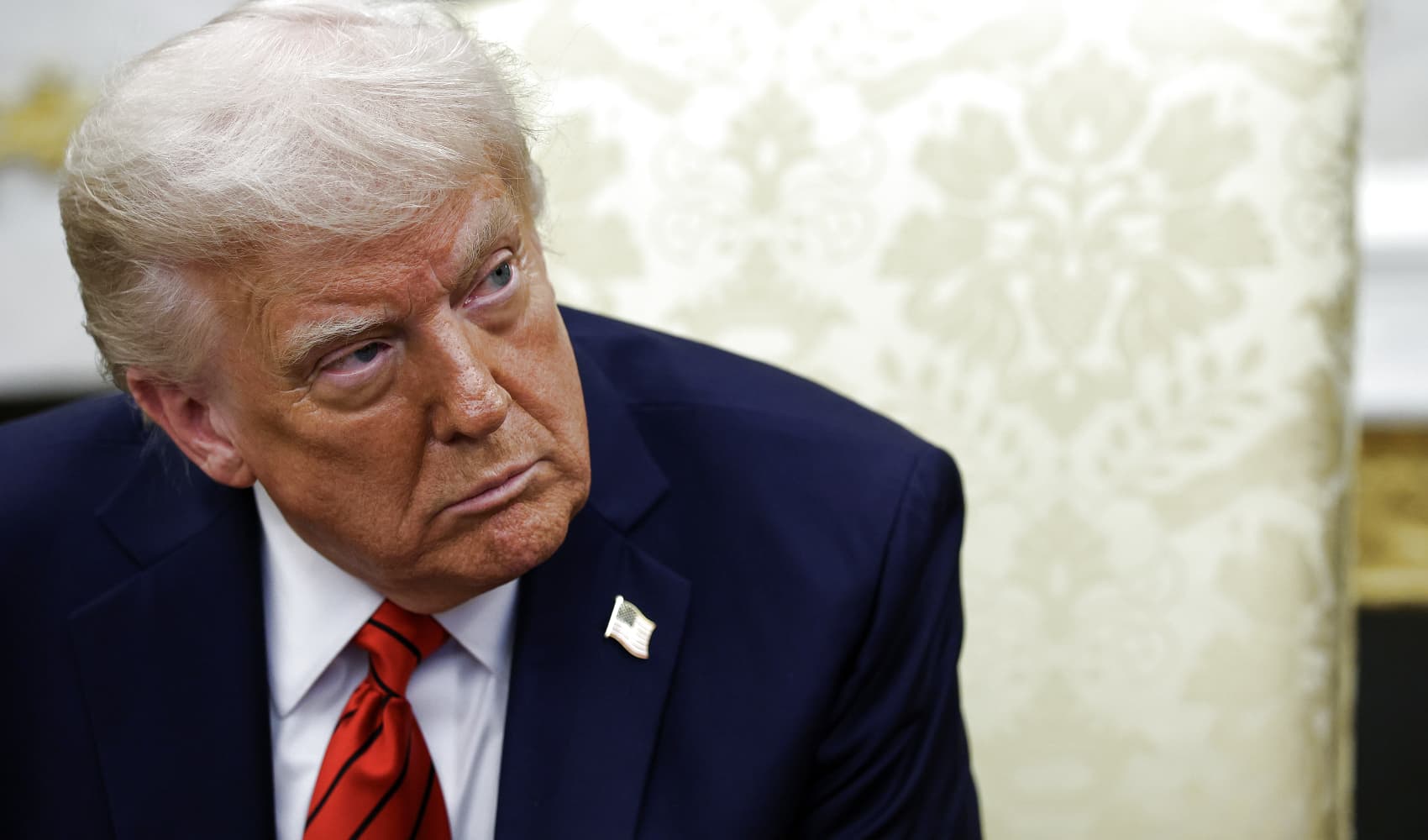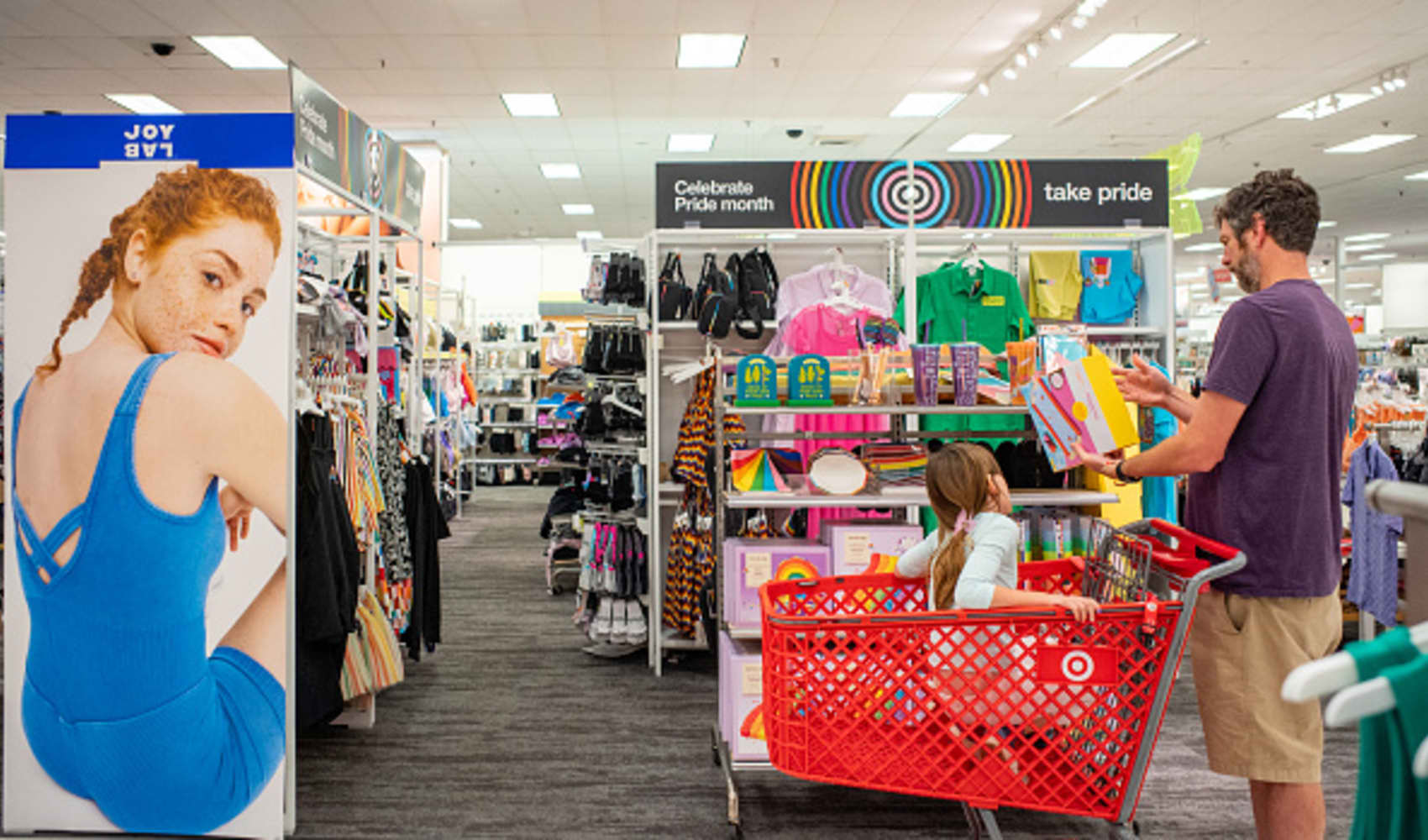Trump's Tariff Meeting: CEOs of Walmart, Target, & Home Depot Respond
Trump's Tariff Talk: How Walmart, Target, and Home Depot CEOs Are Bracing for Impact
Introduction: The Retail Rumble Over Tariffs
What happens when the President of the United States, known for his aggressive stance on trade, invites the CEOs of retail giants like Walmart, Target, and Home Depot to the White House? You get a high-stakes meeting, that's what! President Donald Trump's tariff policies have sent ripples throughout the business world, and now, some of the biggest players are coming face-to-face with the potential consequences. It's a showdown between protectionist policies and the realities of global supply chains. But how will this all play out for consumers? Let's dive in and find out.
Tariffs Take Center Stage: A Meeting of the Minds
President Donald Trump on Monday met with chief executives from three of the nation’s top retailers, who came to the White House to discuss how his sweeping tariff plans could impact their import-heavy business models.
Walmart CEO Doug McMillon and Target chief executive Brian Cornell both attended, as did Home Depot CEO Ted Decker.
The Key Players: Walmart, Target, and Home Depot in the Spotlight
Walmart: The Retail Behemoth
Walmart CEO Doug McMillon stepped into the White House, carrying the weight of the world's largest retailer on his shoulders. Walmart's vast supply chain relies heavily on imports, making them particularly vulnerable to tariff hikes. But, as we'll explore, Walmart might just be better positioned to weather this storm than some of its competitors. Their size and scale give them leverage that smaller retailers simply don't have.
Target: The Trendy Trendsetter
Target CEO Brian Cornell also joined the discussion. Target has carved out a niche for itself with its trendy products and stylish collaborations. But those trendy goods often come from overseas, meaning tariffs could hit Target shoppers right in the wallet. Is Target prepared to absorb those costs, or will prices have to go up?
Home Depot: The Home Improvement Giant
Home Depot CEO Ted Decker rounded out the trio. As the leading home improvement retailer, Home Depot relies on a steady stream of imported materials, from lumber to tools to decorative items. With rising tariffs, will those DIY projects suddenly become a lot more expensive? The answer could depend on Home Depot's ability to adapt and negotiate.
The Tariff Landscape: A Complex Web of Trade Wars
Trump's aggressive tariff policies have been a source of constant uncertainty for investors and business leaders. Why? Because many businesses, including these retail giants, rely heavily on imported goods. These tariffs act like a tax on imported goods, making them more expensive for companies to buy and, ultimately, for consumers to purchase.
Walmart's Advantage: Size Matters in the Tariff Game
Navigating the Storm: Walmart's Strategic Edge
Walmart is in a better position to weather Trump’s protectionist trade agenda than many of its competitors. How so? Their sheer size gives them negotiating power with suppliers. They can potentially absorb some of the tariff costs or find alternative sourcing options more easily than smaller retailers. Think of it as a big ship weathering a storm; it's more stable than a small boat.
The Power of Scale: How Walmart Can Absorb Costs
Walmart's massive scale allows them to operate on razor-thin margins. This means they might be able to absorb some of the tariff costs without significantly raising prices for consumers. It's a delicate balancing act, but their size gives them more room to maneuver. Will it be enough to avoid price hikes? Only time will tell.
The Impact on Consumers: Will Prices Rise?
The Bottom Line: Who Pays the Price?
The big question is, who ultimately pays for these tariffs? The answer is often the consumer. When companies have to pay more for imported goods, they often pass those costs on to shoppers in the form of higher prices. This can lead to inflation and a decrease in consumer spending. No one wants to see their dollar buy less.
Inflationary Pressures: A Threat to the Economy
Tariffs can contribute to inflationary pressures, making everyday goods more expensive. This can especially hurt lower-income families who are already struggling to make ends meet. The consequences can extend beyond just the price tag; it impacts overall economic stability.
Uncertainty in the Market: Investor Anxiety and Business Hesitation
The Ripple Effect: Uncertainty for Investors
Trump's aggressive tariff policies have caused uncertainty both for investors and business leaders. This uncertainty can lead to market volatility and a reluctance to invest in new projects. Investors hate uncertainty like vampires hate sunlight.
Hesitation in Hiring: Businesses on Edge
When businesses are unsure about the future, they tend to be more cautious with their spending and hiring. This can slow down economic growth and lead to job losses. It's a domino effect that no one wants to see.
Alternative Sourcing: A Potential Solution?
Diversifying Supply Chains: Finding New Options
One way retailers can mitigate the impact of tariffs is to diversify their supply chains and find alternative sourcing options. This means looking beyond China and exploring other countries with lower tariffs or more favorable trade agreements. It's like hedging your bets; don't put all your eggs in one basket.
Challenges of Diversification: Time and Investment
Diversifying a supply chain is not an easy task. It requires time, investment, and careful planning. Retailers need to establish new relationships with suppliers, ensure quality control, and navigate different regulatory environments. It's a complex undertaking.
The Political Landscape: Tariffs as a Bargaining Chip
Trump's Strategy: Using Tariffs as Leverage
Trump has often used tariffs as a bargaining chip in trade negotiations. The idea is to put pressure on other countries to agree to more favorable trade deals. But this strategy can be risky, as it can also lead to retaliatory tariffs and trade wars. Is the risk worth the reward?
The Global Impact: Trade Wars and Economic Consequences
Trade wars can have far-reaching economic consequences, disrupting global supply chains and slowing down economic growth worldwide. It's a complex web of interconnected economies, and tariffs can disrupt the entire system.
The Future of Retail: Adapting to a Changing Trade Environment
Innovation and Adaptation: The Key to Survival
Retailers need to be innovative and adaptable to survive in a changing trade environment. This means exploring new technologies, streamlining operations, and finding creative ways to reduce costs. It's survival of the fittest in the business world.
The Rise of Domestic Production: A Potential Shift
Tariffs could potentially lead to a shift towards more domestic production. As imported goods become more expensive, manufacturers may be incentivized to bring production back to the United States. This could create jobs and boost the domestic economy. Will we see a resurgence of "Made in the USA"?
The Big Picture: Tariffs and the Global Economy
The Interconnected World: Understanding the Impact
The global economy is interconnected, and tariffs can have a ripple effect across borders. It's important to understand the big picture and the potential consequences of trade policies. Tariffs aren't just about individual companies; they're about the entire global economic system.
The Long-Term Implications: Shaping the Future of Trade
The long-term implications of Trump's tariff policies are still uncertain. But one thing is clear: they are reshaping the future of trade and forcing businesses to adapt to a new reality. How will this new reality impact consumers, businesses, and the global economy as a whole?
Conclusion: Navigating the Tariff Terrain
The meeting between President Trump and the CEOs of Walmart, Target, and Home Depot highlights the significant impact of tariffs on the retail industry and the broader economy. While Walmart may be better positioned to weather the storm, all retailers face challenges in adapting to a changing trade environment. The ultimate impact on consumers remains uncertain, but the potential for higher prices and economic instability is a real concern. As retailers navigate this complex terrain, innovation, adaptation, and strategic decision-making will be crucial for survival and success. The conversation is far from over, and the future of retail hangs in the balance.
Frequently Asked Questions (FAQs)
Here are some frequently asked questions to further clarify the impact of tariffs.
What are tariffs, and how do they work?
Tariffs are taxes imposed by a government on imported goods. They increase the cost of these goods, making them more expensive for consumers and businesses.
How do tariffs affect consumers?
Tariffs can lead to higher prices for consumers, as companies often pass on the increased costs of imported goods. This can reduce consumer spending and impact overall economic growth.
Why did President Trump impose tariffs?
President Trump used tariffs as a tool to negotiate trade deals and protect domestic industries. The goal was to encourage other countries to agree to more favorable terms of trade and to incentivize companies to bring production back to the United States.
Can retailers avoid the impact of tariffs?
Retailers can mitigate the impact of tariffs by diversifying their supply chains, finding alternative sourcing options, and negotiating with suppliers to absorb some of the costs. Innovation and adaptation are key to minimizing the negative effects.
What is the long-term impact of tariffs on the economy?
The long-term impact of tariffs is uncertain, but they can potentially lead to inflationary pressures, reduced consumer spending, and disruptions to global supply chains. They can also incentivize domestic production and reshape the future of trade.

